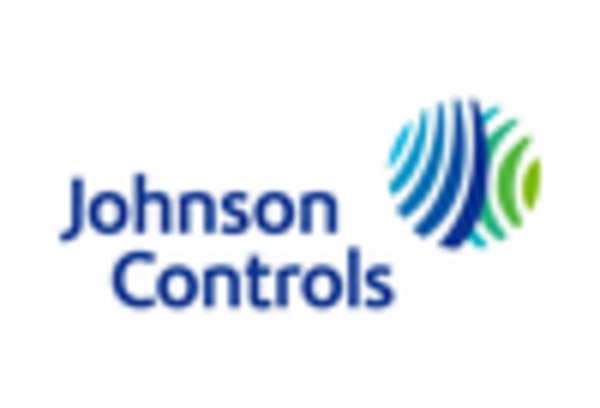Increased Focus on Sustainability
Sustainability has emerged as a critical driver for the Cooling Meter Market. As organizations strive to reduce their carbon footprints, the demand for solutions that promote sustainable practices is on the rise. Cooling meters facilitate this transition by providing essential data that helps in the efficient management of cooling systems. The market for sustainable technologies is projected to grow, with investments in energy-efficient solutions expected to reach billions in the coming years. This growing awareness of environmental impact is likely to propel the Cooling Meter Market, as more entities seek to implement sustainable cooling solutions.
Rising Demand for Energy Efficiency
The increasing emphasis on energy efficiency is a primary driver for the Cooling Meter Market. As energy costs continue to rise, consumers and businesses alike are seeking solutions that minimize energy consumption. Cooling meters play a crucial role in this context by providing accurate measurements of cooling energy usage, enabling users to optimize their systems. According to recent data, the energy efficiency market is projected to grow significantly, with a compound annual growth rate of approximately 8 percent over the next five years. This trend suggests that the Cooling Meter Market will likely experience heightened demand as stakeholders prioritize energy-saving technologies.
Growing Industrialization and Urbanization
The trends of industrialization and urbanization are key drivers for the Cooling Meter Market. As urban areas expand and industries grow, the demand for efficient cooling solutions becomes more pronounced. Increased construction activities and the establishment of new facilities necessitate the implementation of effective cooling systems, which in turn drives the need for cooling meters. Recent statistics indicate that urban populations are expected to rise significantly, leading to higher energy consumption. This surge in demand for cooling solutions is likely to bolster the Cooling Meter Market, as stakeholders seek to optimize their cooling operations in response to these demographic shifts.
Regulatory Pressures and Compliance Standards
Regulatory frameworks aimed at enhancing energy efficiency and reducing emissions are significantly influencing the Cooling Meter Market. Governments worldwide are implementing stricter regulations that mandate the use of energy-efficient technologies in various sectors. Compliance with these regulations often necessitates the installation of advanced cooling meters, which provide accurate data for monitoring and reporting purposes. The market for compliance-driven technologies is anticipated to grow, with many industries facing increased scrutiny regarding their energy consumption practices. This regulatory landscape is likely to drive demand for cooling meters as organizations seek to adhere to evolving standards.
Technological Advancements in Metering Solutions
Technological innovations are transforming the Cooling Meter Market, leading to the development of advanced metering solutions. The integration of IoT and smart technologies into cooling meters allows for real-time monitoring and data analytics, enhancing operational efficiency. These advancements enable users to track energy consumption patterns and identify inefficiencies. The market for smart metering solutions is expected to expand, with estimates indicating a growth rate of around 10 percent annually. This evolution in technology not only improves user experience but also aligns with the broader trend of digital transformation across various sectors, thereby driving the Cooling Meter Market forward.

















Leave a Comment